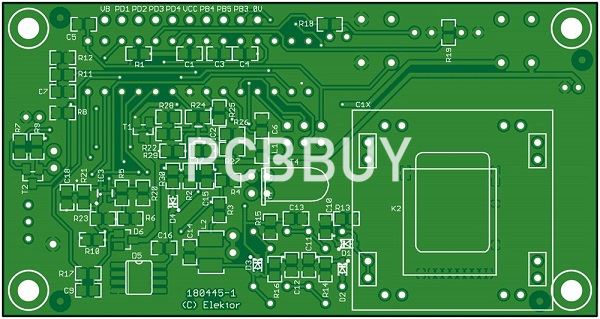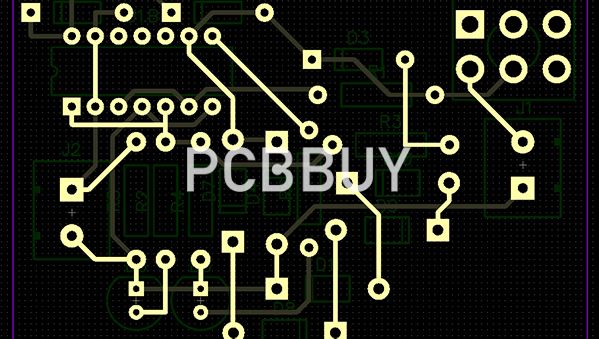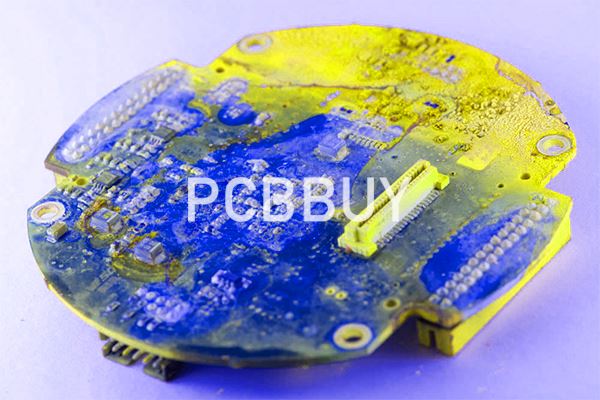How Do Magnetic Coupling Work in PCB Manufacturing Process?
By:PCBBUY 11/26/2021 09:15

Magnetic coupling is a different animal. A moving electrical charge will generate a magnetic field as a byproduct. The magnetic fields can be quite powerful though their effect drops off rapidly as the victim moves away from the aggressor.
During the PCB manufacturing process, there are several factors for a high quality finished products. If you are going to learn more information about magnetic coupling PCB, please check and read the content below in this passage.

Why to choose coupling for PCB trace?
When transmission lines run side by side, the capacitive coupling mechanism is dominated by the magnetic component of the electromagnetic field. In over and under routing the electric field will dominate.
Several methods have been proposed for controlling backward crosstalk. Among these are:
· Restricting length that transmission lines run side by side
· Inserting “guard traces” between the two transmission lines
· Rows of “ground” vias on both sides of a sensitive signal
What are the advantages of PCB coupling?
Looking on the bright side, a talkative child can be a sign of a future leader, debater, or lawyer. In this same way, capacitive coupling can be good or bad, depending on the circumstances.
When intentionally applied in electronics, the principle of capacitive coupling gives rise to the miracle of modern devices like touch panels and capacitive sensing buttons. These devices detect and convert the changes in measured capacitance into user inputs.
However, capacitive coupling that results from unintended capacitance or parasitic capacitance is disruptive to a circuit’s performance. Capacitive coupling is what causes crosstalk, where the signal from one conductor is coupled into an adjacent one.

What are the main types of crosstalk of PCB coupling?
All crosstalk occurs between a victim line (the net or transmission line where a crosstalk signal is induced) and one or more aggressor lines (the net or transmission line that induces the crosstalk signal in the victim). If you read through different tutorials and websites, you’ll see that there are several terms used to describe types of crosstalk:
· Far-end crosstalk (FEXT). This is the crosstalk signal measured at the receiver end of a cable or transmission line.
· Near-end crosstalk (NEXT). This is the crosstalk signal measured at the transmitter end of a cable or transmission line.
· Power-sum NEXT and FEXT (PSNEXT and PSFEXT). These are not a different type of crosstalk, these terms simply refer to the way in which crosstalk is quantified. In this case, it’s done in terms of absolute or relative power.
· Alien crosstalk (AXT). This term is used in the telecommunications industry to describe crosstalk between twisted pair wiring, but it is also used to describe crosstalk in PCBs for telecom systems.
· Power-sum equal-level crosstalk (PS-ELFEXT). This is basically equal to PS-FEXT + PS-NEXT.
· Forward and backward crosstalk. This just tells you the direction a crosstalk signal travels along a transmission line. Forward crosstalk propagates in the same direction as the aggressor signal, while backward crosstalk propagates in the opposite direction.
What are the applications of magnetic PCB coupling?
The first one, finger tracking, seems quite sensitive while the second seems much more burley. You know some serious coupling is going on when it can recharge a spent battery. It works because there is a rather large coil on both the charging element and another coil on the mobile device. The two devices lock into what is called resonant magnetic coupling.
This frequency alignment allows the power to be scavenged by the receiving unit over a greater distance than typical inductive coupling. The real advance over the days of Nicola Tesla is in efficiency. Resonant transfer works by making a coil ring with an oscillating current. This generates an oscillating magnetic field.

What are the consideration s of magnetic PCB coupling?
In order to preserve signal integrity, we want to avoid the impedance mis-matches that create obstacles to the current flow. Vias are one of the prime locations for magnetic coupling. Going from a trace into a barrel and back to a trace can be jarring at high data rates.
A little story: Every engineer you work is going to have their own priorities. Some will focus on the power shapes and bypass capacitor placement. Doing well on this will mitigate most other issues. Other EE’s will strive for tighter length matching or ground rails between channels so as to center-cut the timing budget.
I had one gentleman who just couldn’t stand the sight of two vias passing through the same void in the ground plane. The only time that was ok is when the two vias carry signals that form a differential pair. The rest of the time, this was an open invitation for large magnitude signals to mess with their small magnitude cousins.
Industry Category











